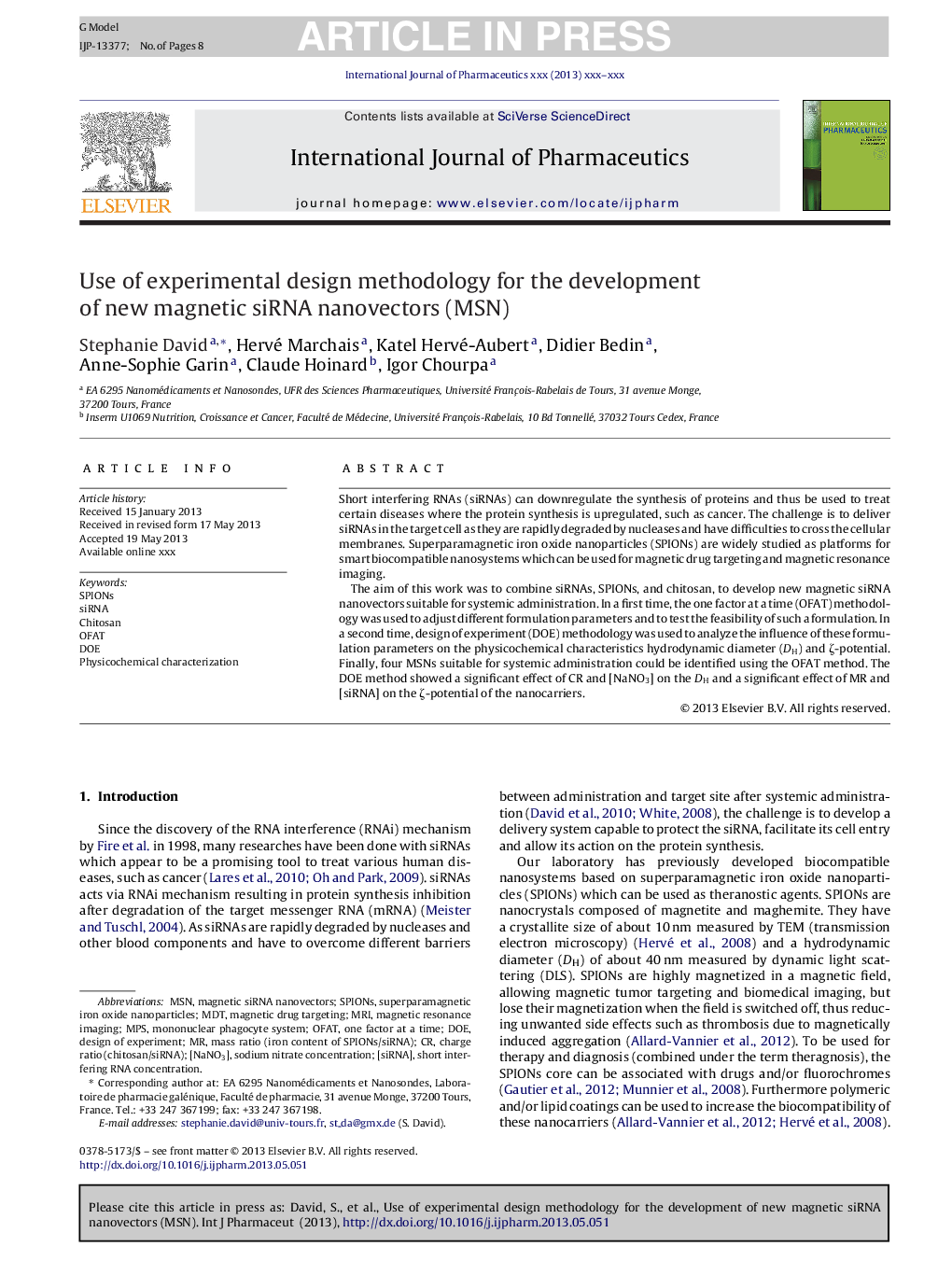| Article ID | Journal | Published Year | Pages | File Type |
|---|---|---|---|---|
| 5820178 | International Journal of Pharmaceutics | 2013 | 8 Pages |
Abstract
Short interfering RNAs (siRNAs) can downregulate the synthesis of proteins and thus be used to treat certain diseases where the protein synthesis is upregulated, such as cancer. The challenge is to deliver siRNAs in the target cell as they are rapidly degraded by nucleases and have difficulties to cross the cellular membranes. Superparamagnetic iron oxide nanoparticles (SPIONs) are widely studied as platforms for smart biocompatible nanosystems which can be used for magnetic drug targeting and magnetic resonance imaging.The aim of this work was to combine siRNAs, SPIONs, and chitosan, to develop new magnetic siRNA nanovectors suitable for systemic administration. In a first time, the one factor at a time (OFAT) methodology was used to adjust different formulation parameters and to test the feasibility of such a formulation. In a second time, design of experiment (DOE) methodology was used to analyze the influence of these formulation parameters on the physicochemical characteristics hydrodynamic diameter (DH) and ζ-potential. Finally, four MSNs suitable for systemic administration could be identified using the OFAT method. The DOE method showed a significant effect of CR and [NaNO3] on the DH and a significant effect of MR and [siRNA] on the ζ-potential of the nanocarriers.
Keywords
Related Topics
Health Sciences
Pharmacology, Toxicology and Pharmaceutical Science
Pharmaceutical Science
Authors
Stephanie David, Hervé Marchais, Katel Hervé-Aubert, Didier Bedin, Anne-Sophie Garin, Claude Hoinard, Igor Chourpa,
